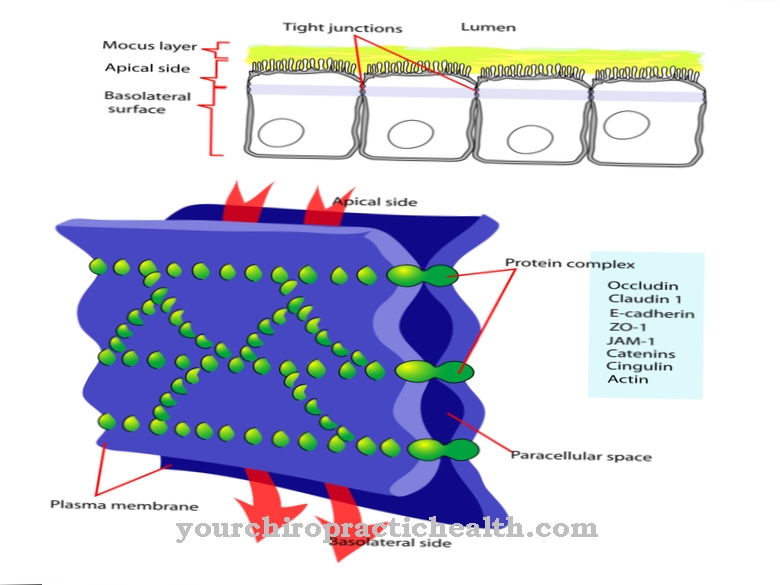At the Floating Harbor Syndrome it is a disease from which the affected patients suffer from birth. Floating Harbor Syndrome occurs with a relatively low average frequency in the population. Short stature with abnormalities on the face is typical of the disease. In addition, the language ability of the person with floating harbor syndrome develops delayed.
What is Floating Harbor Syndrome?

© peshkova - stock.adobe.com
Floating Harbor Syndrome is used by some medical professionals using synonymous terms Floating harbor short stature or Pelletier-Leisti syndrome designated. The latter name refers to the two doctors who first described the disease. These are two medical professionals from the United States of America.
As part of the disease, the affected patients suffer from deformities in the face and characteristic short stature. The age of the bones is retarded, and the development of language skills in the affected children is slowed down. There are also numerous other symptoms of the disease. Floating Harbor Syndrome is extremely rare. To date, only around 50 cases have been registered.
causes
In view of the currently available research results and studies, it is not yet possible to make any reliable statements about the causes of the development of the floating harbor syndrome. The genesis of the disease has so far been largely unexplored. However, doctors assume that Floating Harbor Syndrome is a disease with predominantly genetic causes.
In certain families with cases of floating harbor syndrome, it has been shown that the disease is obviously passed on to the family offspring via an autosomal dominant inheritance. In the majority of cases, however, the floating harbor syndrome occurs sporadically. The prevalence of the disease is currently estimated at less than 1: 1,000,000. Mutations on some genes are conceivable for the development of the disease, but these have not yet been identified.
Symptoms, ailments & signs
Floating Harbor Syndrome manifests itself in a multitude of typical symptoms. The short stature from which the sick patients suffer in most cases is particularly characteristic. People with Floating Harbor Syndrome grow to an average of 140 centimeters or less.
Other distinguishing features of the disease can be seen on the face. Here the patients usually show significant abnormalities. The face is characterized by a triangular shape. The nose appears comparatively large and has a concise bridge of the nose. The mouth tends to be wide with small lips. In contrast, the chin of the affected patient is prominently pronounced.
The eyes are usually deep. Often it is easy to overstretch the joints. The teeth of the affected person may also be enclosed by the malformations. For example, the patients have a large number of teeth in the area of the upper jaw. The neck is often relatively short. Occasionally there are abnormalities in the anatomy of the heart.
In addition to the physical signs of floating harbor syndrome, the sick patients suffer from a decrease in intelligence in numerous cases. Language development is slow. People affected by Floating Harbor Syndrome have great difficulty expressing themselves through their limited ability to speak. In addition, they often nibble when speaking.
diagnosis
The typical anatomical anomalies of people with floating harbor syndrome often indicate the presence of the disease. Most complaints are clearly visible at birth or at a young age. The malformations of the affected patients are visible to both doctors and parents and give rise to appropriate examinations.
In the first step, a medical history is taken together with the patient concerned and the legal guardian of the minor child, which is carried out by a suitable doctor. As part of the patient consultation, the attending physician asks about the symptoms and possible factors behind the development of the disease. A so-called family history is important here, because the floating harbor syndrome is a genetic disease.
Pediatricians and various specialized doctors are usually involved in making the diagnosis of floating harbor syndrome. During clinical examinations, evidence of the existence of floating harbor syndrome is collected. The malformations of the face in particular indicate the disease.
X-ray examinations show the severe delays in bone age. Carrying out a differential diagnosis plays an important role, whereby the floating Harbor syndrome is primarily to be differentiated from monosomy 22q11 and Rubinstein-Taybi syndrome. In addition, the doctor has to distinguish the symptoms of Silver-Russell syndrome.
Complications
Floating Harbor Syndrome has various complications of varying degrees. In most cases, the patients suffer from facial deformities and short stature. Most patients also have difficulty speaking. The short stature occurs as the first complication and is immediately noticeable.
Those affected can reach a height of only 140 centimeters. The short stature can lead to bullying and teasing, especially among children. However, adults are also affected by Floating Harbor Syndrome. The short stature reduces your self-esteem, which can lead to depression.
The quality of life decreases and everyday life is made more difficult by the short stature. The malformations can also spread to the patient's teeth. These can be remedied with surgical interventions. In some cases, the heart is also affected by the abnormalities. Various complications can arise that can affect the heart.
Floating Harbor Syndrome has a minor intellectual disability. Ordinary speaking is not possible. This barrier can also lead to feelings of inferiority and psychological problems in children and adults. Treatment is not possible for Floating Harbor Syndrome. The language problems can be solved through exercises. The short stature can also be reduced by using growth hormones. There are no further complications.
When should you go to the doctor?
If a child is born with facial abnormalities, a medical examination should be initiated immediately. In the case of an inpatient birth, this is automatically taken over by the hospital staff. If the birth takes place without an obstetrician, a visit to the doctor is urgently necessary.
If there are irregularities in the further growth and development process, these must be presented to a doctor. If relatives and people in their immediate vicinity notice unusual physical changes in the child compared to their peers, these should be clarified by a doctor.
Reduced growth and a severely shortened neck are considered worrying and should be examined. In addition, if the child experiences noticeable emotional and mental problems, a doctor should be consulted. Refusal of food, aggressive behavior or a tendency to withdraw are indications of irregularities that should be discussed with a doctor.
If a decreased intelligence is suspected, it is advisable to present this observation to a doctor. Children with Floating Harbor Syndrome have the ability to hyperextend their joints. This process is considered unnatural. A strong delay in language development is also unnatural. A limited ability to speak and a lack of understanding of the language give rise to the child being examined and treated by a doctor.
Doctors & therapists in your area
Treatment & Therapy
A therapy for the causes of the floating harbor syndrome is currently not possible. Instead, Floating Harbor Syndrome is treated symptomatically. As a rule, the children affected receive special education and special grants. Physiotherapy treatment may also be useful. A therapy with growth hormones is sometimes an option.
Numerous patients achieve a comparatively high quality of life in spite of the floating harbor syndrome and are in some cases able to manage their everyday lives on their own. The abnormalities on the face fade into the background with increasing age. Regular examinations at the dentist check the number and condition of teeth so that they can be corrected promptly.
Outlook & forecast
The outlook for Floating Harbor Syndrome, which occurs rarely, is poor due to the large number and severity of symptoms. Short stature, language problems and changes in facial structure are usually permanent consequences of this syndrome. Therapy is not yet possible. At best, therapeutic attempts with growth hormones can be undertaken. This can reduce the short stature somewhat.
Since this disease is mostly genetic and congenital, only gene therapy could improve the prognosis of Floating Harbor Syndrome. So far, interests in developing appropriate therapies have not been very pronounced due to the rarity of this syndrome. That worsens the prognosis. It should also be noted that this genetic change could harm further offspring. In addition, the differentiation from other diseases is often difficult.
Another problem is that complications can arise in the course of the disease. The short stature and the formative facial features can lead to bullying and teasing in affected children. Depression can result. The prognosis for treatment success for such depression is also difficult. The problems in everyday life persist for life.
The appearance of the Floating Harbor Syndrome can at least partially be improved surgically if the teeth are misaligned. Anomalies in the heart are fraught with worse prospects. Something can be done about language problems. The extent to which it can be successful varies from person to person.
prevention
Floating Harbor Syndrome cannot be prevented yet. For preventive measures, there is a lack of knowledge about the exact causes in order to counteract this. Instead, an early diagnosis of the floating harbor syndrome is important in order to provide the affected children with adequate support in good time.
Aftercare
In most cases, those affected with floating harbor syndrome have no special follow-up options available. As a rule, however, these are not necessary, since the symptoms can only be treated symptomatically. However, if the affected person wishes to have children, genetic counseling is recommended in order to avert a possible passing on of the syndrome in advance.
In this disease, the anomalies and malformations are treated with the help of surgical interventions. There are no particular complications, but the patient should always rest and take care of his body after such an operation. Exertion or other stressful activities should be avoided. Even after a successful procedure, regular examinations are necessary to guarantee complete healing.
In many cases it is also necessary to take hormones. It is important to ensure that it is taken regularly and correctly. The doctor's instructions should always be followed, and the doctor should be consulted in cases of doubt. The malformations of the teeth can also be alleviated relatively well with regular checks. Typically, Floating Harbor Syndrome does not reduce the patient's life expectancy.
You can do that yourself
The possibilities of self-help are limited in the Floating Harbor Syndrome to an improvement in the quality of life through a basic attitude that is as positive as possible, a healthy lifestyle and optimized leisure activities to promote joy in life. The disease gives the patient no opportunity to achieve relief or recovery on their own or on the basis of natural self-healing powers.
The physical abnormalities can be corrected by a surgeon. Nevertheless, despite great efforts, a visual change remains in direct comparison to healthy people. The patient should therefore find a mental way to still achieve a good quality of life.
Since the floating harbor syndrome is also a great challenge for relatives, attention must also be paid to strengthening the emotions and building confidence of family members in everyday life. They experience a great deal of stress and change in their everyday life due to the necessary consideration and care or support for the patient.
Well-being improves for everyone involved if they pursue a healthy diet, sufficient exercise and the reduction of stressors. The immune system is strengthened and the inner balance is restored. Attention should be paid to methods that can be carried out according to the individual specifications and that do not represent excessive demands. Sufficient rest and protection are important for everyone in order to improve their quality of life.


.jpg)
.jpg)

.jpg)
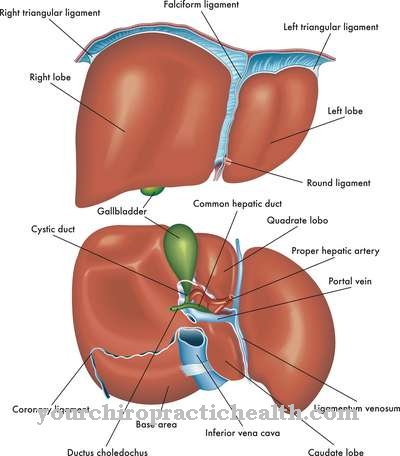

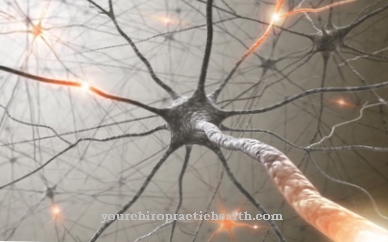
.jpg)

.jpg)

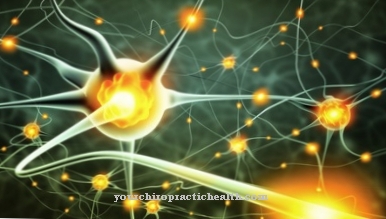
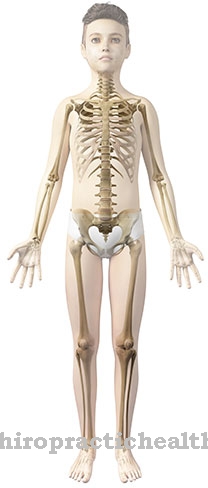


.jpg)





